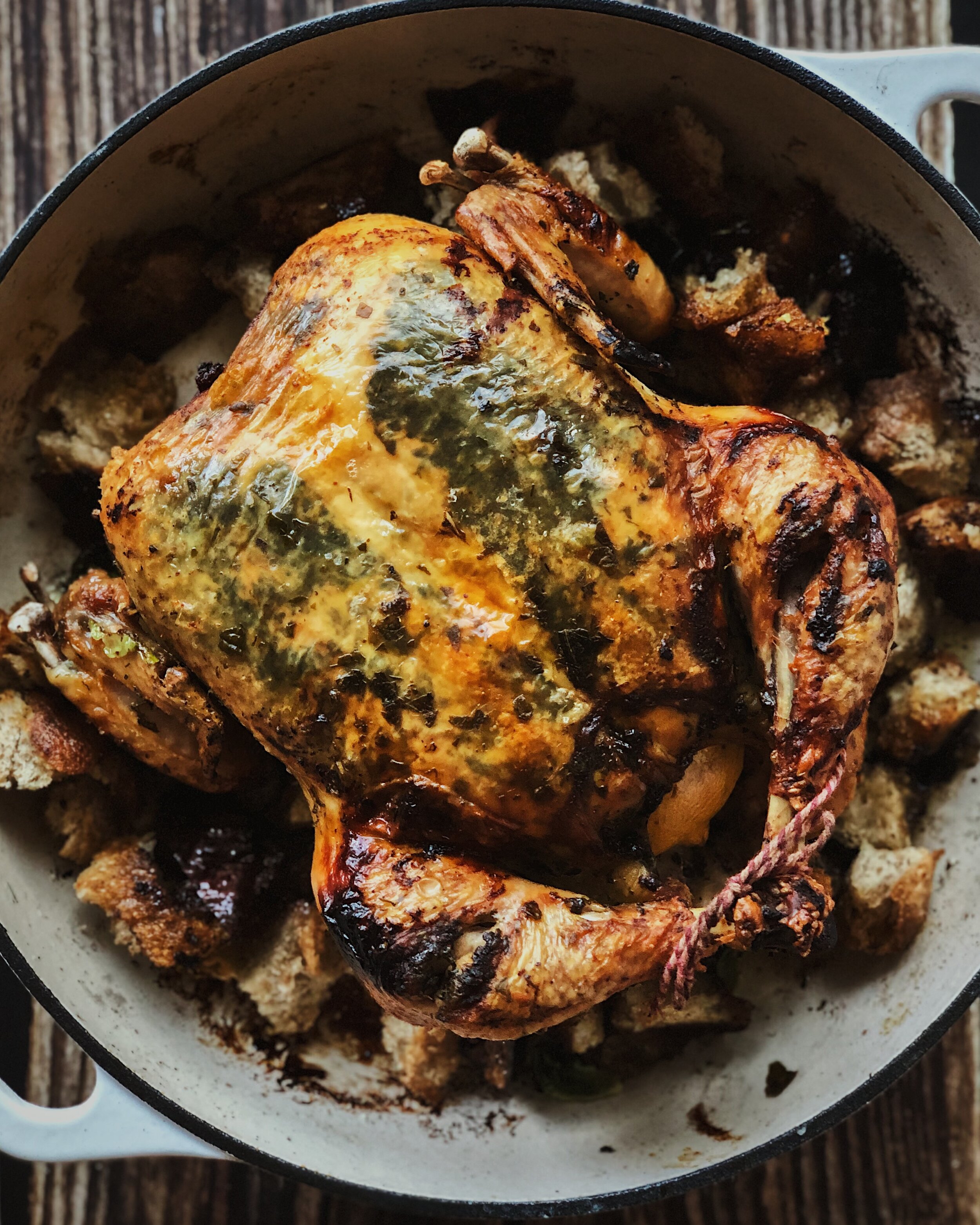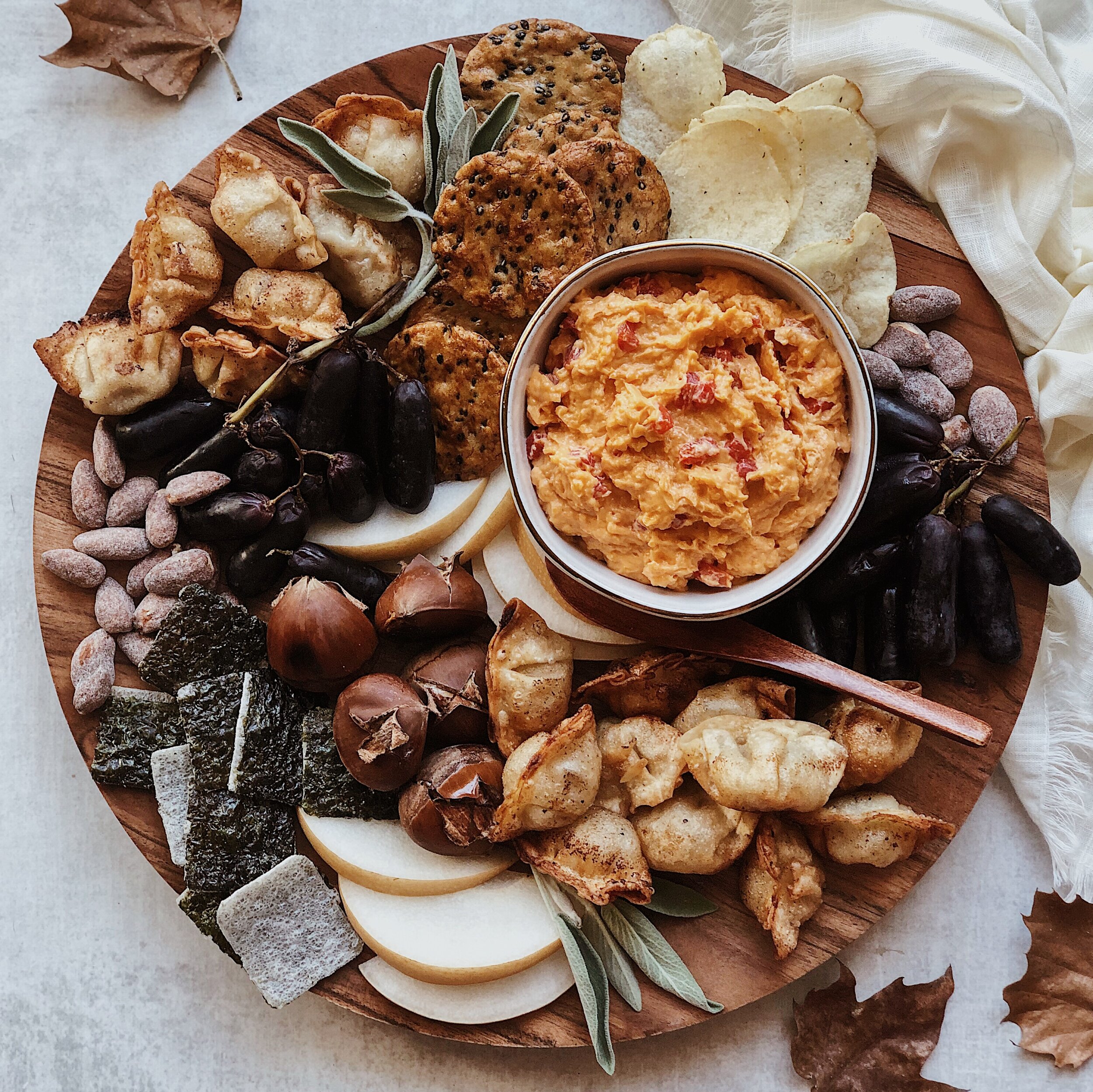Recipe: Gochujang Hot Cocoa Cookies
/It has been a great ambition of mine to develop a savory cookie recipe. Even though I don’t have much of a sweet tooth, I love the IDEA of cookies…especially chewy ones. When Chris Morocco’s miso almond butter cookie recipe blew up during quarantine, I thought that the work had already been done for me and I could peacefully retire that goal. I made his recipe, but it was way too salty for my liking. Still very tasty but, like, needed to drink half a gallon of water after. In fairness, I probably used the wrong kind of miso, but I think it is problematic that the recipe doesn’t specify; there are a lot of miso varieties out there and they can be super different from one another! Anyway, the quest for good savory cookie was back on.
And then I had to develop a holiday recipe for a client using their gochujang-based sweet and spicy condiment, and I thought—here’s my chance to work on that savory cookie recipe. I was really happy with how that recipe turned out, and when I shared it in my Instagram stories, I got a lot of intrigued members of Team Savory wanting to know more! I was certainly pleased to know that 1) people did not think I was out of my mind for making a cookie with gochujang (Korean hot pepper paste) and 2) there are other people who like the idea of a cookie that teeters into the realm of savory!
That recipe revolves around having a very specific product from that particular client, but I decided to also make a spinoff that uses more generic ingredients, since the product isn’t available everywhere. This time, I also worked in a little bit of cocoa powder, because I love that combination of chili and chocolate! The result is a soft, almost cake-like cookie that hits a little salty upon first bite, then evolves into sweetness with a quiet chili burn, and leaves a faint cocoa-y memory thereafter. Appearance-wise, I like to think of them as a distant sassy Korean relative to the Pfeffernüsse cookies that popular in Germany at Christmastime, but the flavors are VERY different.
I will confess I only tested this with one tub of gochujang: this one. Other than the spiciness (which can be selected to your taste) there is less variation among these rectangular tubs of gochujang from the Korean market than there are types of miso but I will caution that if the gochujang you have is super salty you may want to dial back on adding salt to the dough. Also, I find that the texture and moisture content of gochujang changes the longer the tub sits in your fridge, so I would recommend making sure your gochujang is somewhat fresh, or whisking it together with a small splash of water if it’s been a while since the last time the tub saw the light of day.
Eager to buy mooncake molds to be extra prepared for the next Mid-Autumn festival but also very against kitchen uni-taskers, I was happy to learn that this cookie dough is great for taking on pressed designs. (This is the mooncake set I have.) After portioning out the dough for the cookies and rolling them into balls, I simply pressed the dough down using the plates from my mooncake mold set to shape and flatten them. The dough sticks to the mold but is strong/firm enough to then be gently peeled off without losing its shape or pressed pattern. The almond butter in this recipe is more of a structural component than a flavor contributor, but you can always to the classic peanut butter cross hatch design on these if you don’t have a mooncake mold. I obviously loved how they turned out with the mooncake molds, though, because I took a ton of photos!
How to Make Gochujang Hot Cocoa Cookies
(Makes about 18 cookies)
Ingredients
7 tbsp unsalted butter
1/3 cup raw creamy almond butter, stirred
1/4 cup gochujang (like this one), at room temperature
3/4 cup brown sugar, packed
1 egg
1 1/3 cups all purpose flour
1/2 tsp baking soda
1/4 tsp salt
3 tbsp unsweetened cocoa powder
Sparkling sugar
Procedure
Place butter in a large mixing bowl and melt in the microwave for 30 seconds, and then for additional 10-second increments until completely melted. Working quickly while the butter is still hot, drizzle in almond butter and whisk thoroughly to combine. Then add gochujang and whisk thoroughly again to combine.
Whisking vigorously after each additional ingredient, add the brown sugar, egg, then cocoa powder to the mixture. (All this whisking is what will help give the cookies their airy yet cakey texture.)
In a separate bowl, whisk together flour, baking soda, and salt. Gradually add the dry ingredients to the wet mixture, using a spoon or spatula to incorporate everything together into a thick dough.
Roll dough into 1- to 1 1/4-inch balls and place them 2 inches apart on a parchment lined baking sheet. Chill them in the refrigerator for 10–15 minutes.
Meanwhile, preheat oven to 350°F.
Use plates from a 100-gram mooncake mold to press designs into the cookies while flattening them. (I found that it worked best to place the ball in the center of the mooncake plate, and then carefully turn them both over onto the baking tray, and press down on the plate until the edges of the cookie dough are almost spread to the edges of the plate.) If necessary, tap the molds in some flour to prevent sticking in between cookies, but make sure there are no clumps of flour on the mold. If you do not have mooncake molds, press a crosshatch pattern into the dough balls with a fork. After pressing all the cookies, sprinkle some sparkling sugar on the tops.
Bake for 9–10 minutes or until bottoms are browned. Remove from the oven and allow to set for 3 minutes before transferring to a rack to cool completely.













































































